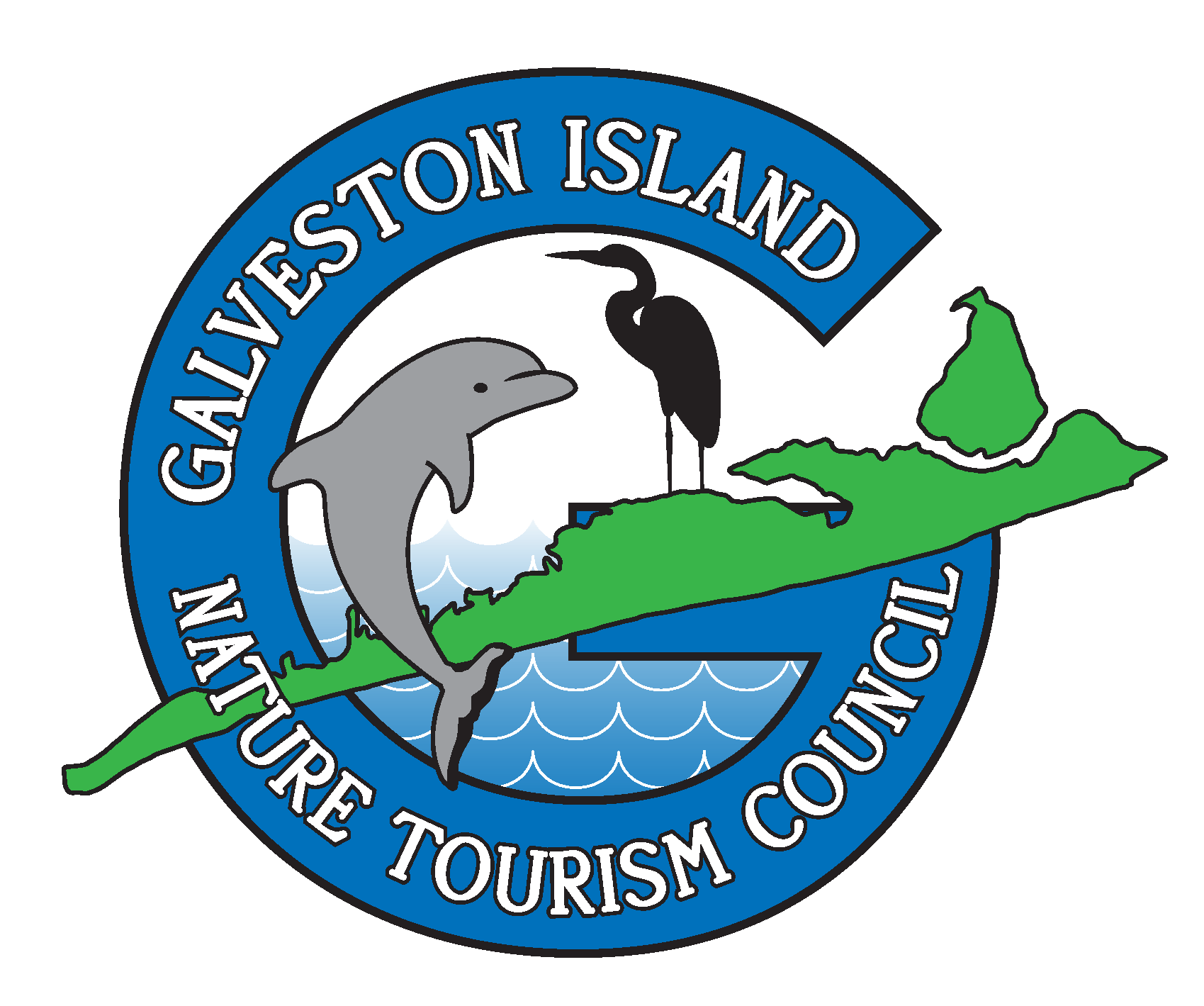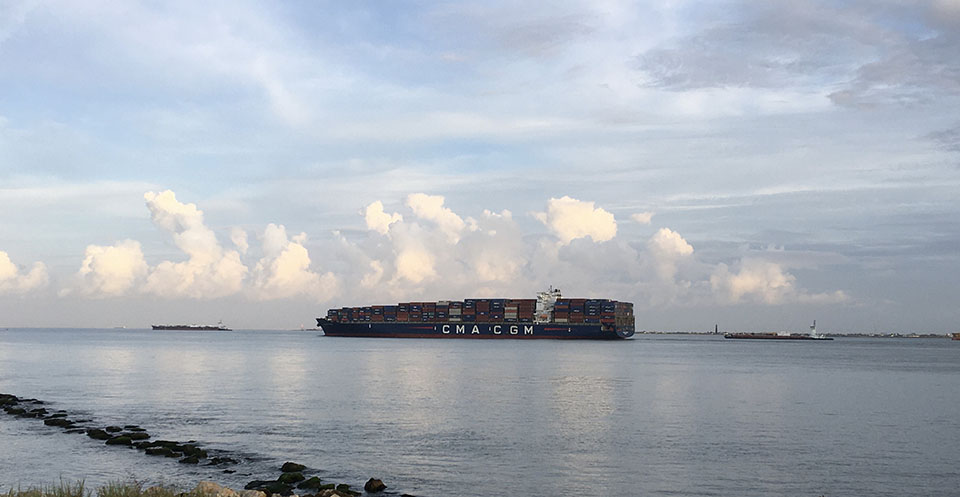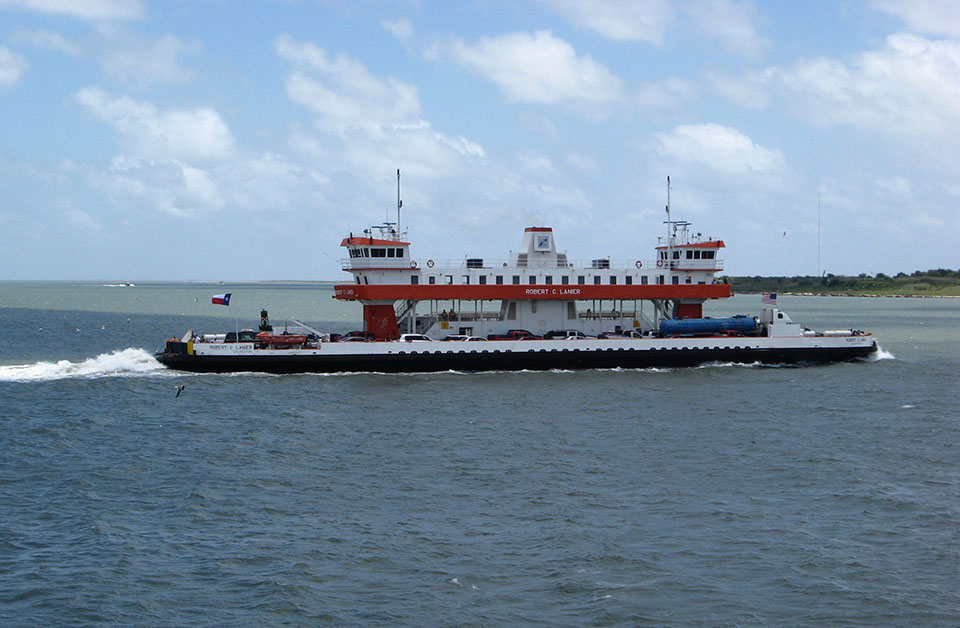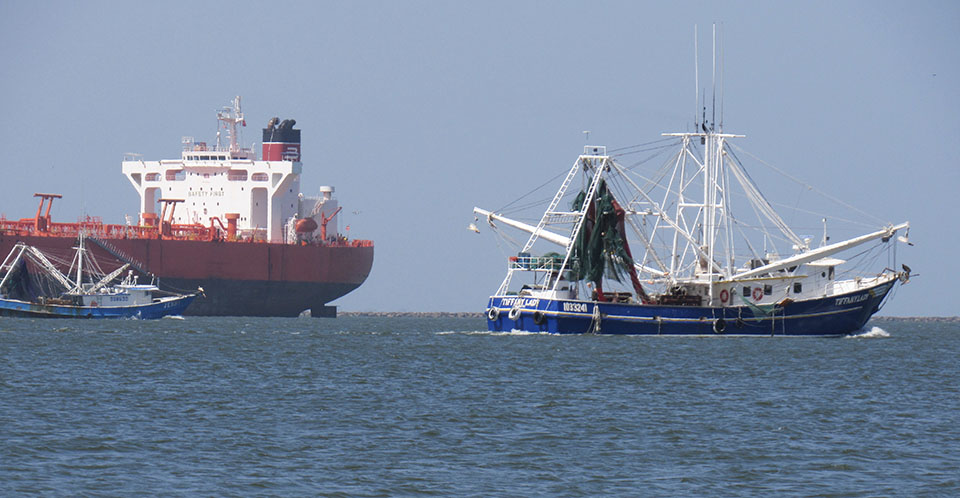by Steve Alexander
Bolivar Roads is the name of the wide scenic waterway located at the east end of Galveston Island. It’s the passageway connecting the Gulf of Mexico to Galveston Bay, bordered by the North and South jetties that protect the waterway from filling in with sand.
There’s a lot going on here that’s worth a look.
Shipping, for example. The channel’s depth of 45 feet provides safe passage for large ocean-going vessels traveling into and out of Galveston Bay. On most days, peering out over this waterway provides proof it’s one of the nation’s busiest, traveled by ships transporting goods to and from the ports of Galveston, Texas City and Houston.
Sights along this waterway are unique. Nowhere else can you see such a wide variety of ships, ferryboats carrying cars and passengers back and forth across the channel, shrimp boats heading offshore in search of “pink gold” — shrimp, that is — and Bolivar Peninsula stretching for miles in the distance.
The view always includes ships anchored in the channel and offshore, waiting their turn to enter port. At times, there may be dozens just sitting. When a ship’s turn is at hand, a small boat heads out to meet them to deliver an experienced pilot who safely guides the ship through the narrow channel. After port duties are done, another pilot boards to guide the ship back out.
Overhead, watch for birds, especially large brown pelicans. They fly over the channel with heads down, searching the water for fish. Upon spotting one, they make kamikaze dives from 30 feet, creating huge splashes. When successful, they’ll sit still while turning the fish headfirst for safe swallowing. They keep their heads down to discourage pesky laughing gulls from stealing their catch. When ready to swallow, they throw their heads back and down it goes. Then it’s off again for another dive.
Things unnoticed happen here, too.
The ebb and flow of the tides, for one. Tides move massive amounts of water into Bolivar Roads on an incoming tide and massive amounts of water out on a falling tide.
These daily tidal movements are important to the life cycles of several important seafood species. For example, larvae of penaeid shrimp and blue crabs catch a ride on incoming tides to reach the shallow bay waters, where food-rich habitats provide nourishment and help them grow quickly. Likewise, southern flounder and redfish, other menu favorites, use incoming and falling tides to aid their seasonal treks between the Gulf and bay.
To get there, travel east on Seawall Boulevard, past Ferry Road, to the end of the seawall. Parking is available there or along Boddeker Road.
And if you’re interested in learning more about “pink gold,” check out the book Shrimp: The Endless Quest for Pink Gold by Jack and Anne Rudloe.
[ABTM id=6804]



